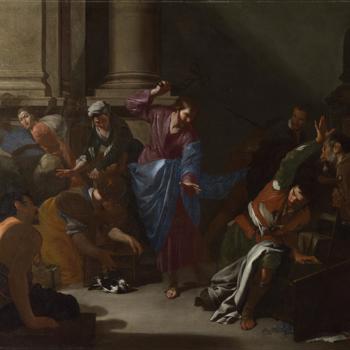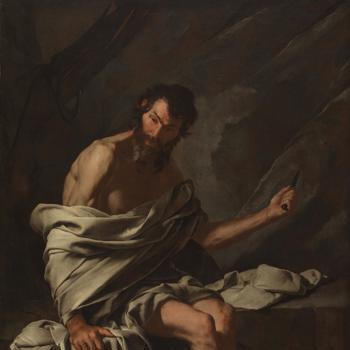Bernardo Cavallino was one of the leading Neapolitan artists of the first half of the 17th century. While many details of his life and career remain shrouded in mystery, he was renowned in his lifetime for his small, sensitive paintings of mythological and Biblical subjects which he painted for a private clientele. Cavallino probably received his training in Naples, the city of his birth, perhaps in the studio of Massimo Stanzione. The early influence of Jusepe de Ribera’s severe naturalism is especially evident in his work, which Cavallino seems to have blended with the more lyrical styles of Anthony Van Dyck and Peter Paul Rubens, whose works he could have studied in Neapolitan collections. He may also have collaborated with Artemisia Gentileschi.
Cavallino’s painterly style is highly distinctive, characterised by harmonious colours, virtuoso brushwork and dramatic, stylised compositions. Just eight of Cavallino’s known works are signed or initialled, and only one is dated: knowledge of the artist has been developed through careful analysis of his style. His career is usually divided into three broad stages. In the early period, his tenebrism and attention to texture are reminiscent of Ribera. By the early 1640s, his paintings take on the lighter cast and more mannered, elegant compositions for which he is best known, such as Christ driving the Traders from the Temple. His later works, painted during the final years of his life, display a renewed interest in theatrical displays of emotion.
Cavallino probably died during the plague that devastated Naples in 1656. He was well regarded in the decades following his death, but knowledge of his paintings - which were often mistaken for the work of other painters - remained rudimentary until the second half of the 20th century when scholars developed a fuller sense of his poetic contribution to 17th-century art.


